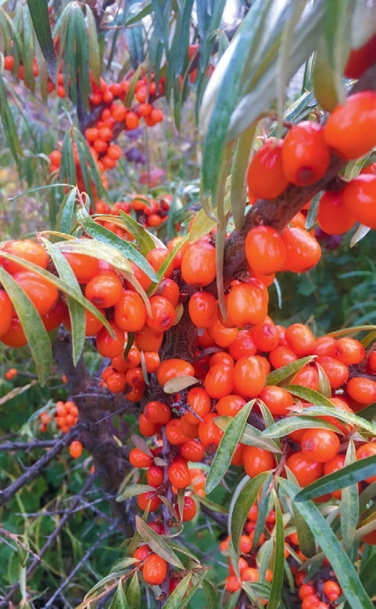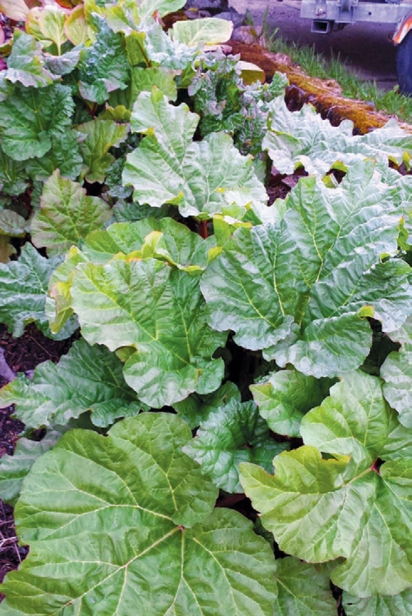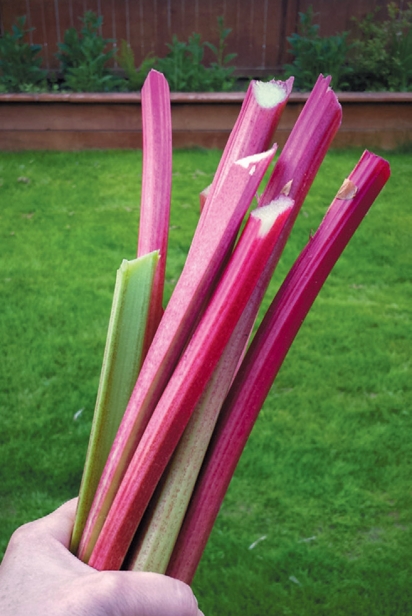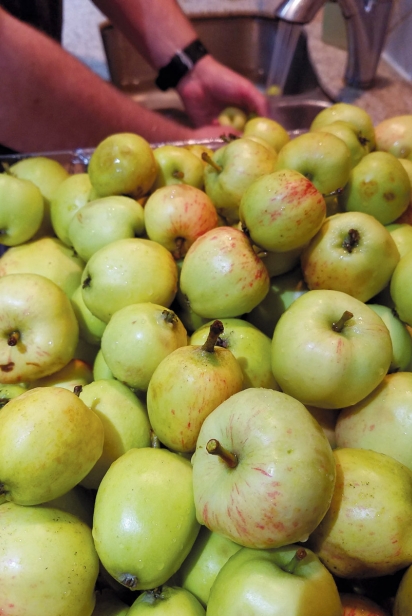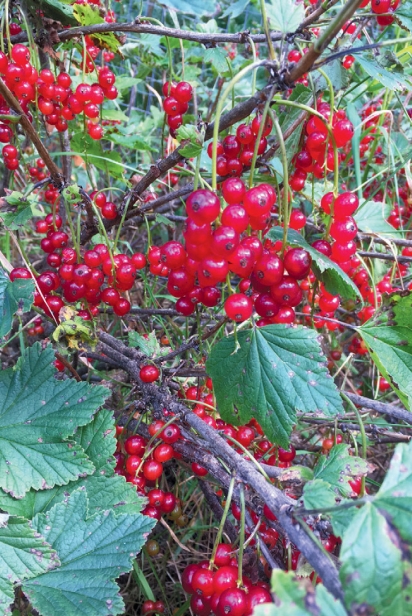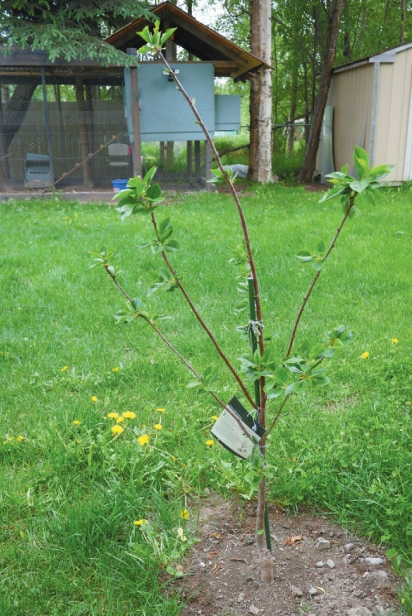Planting Perennials
Creating Edible Landscapes
If you’ve never planted an edible landscape before, the process can feel intimidating. How do you decide exactly what to plant? How do you choose exactly where to break ground?
Planting perennials can relieve some of the gardening stress. Once a perennial is established, you can anticipate years of fresh, relatively low-maintenance food from it. From large cold-hardy fruit trees to dense herbs, plenty of delicious edible perennial plants thrive throughout Alaska.
First, Observe
“Permaculture teaches you to observe, make changes, and then observe some more,” said Cindee Karns of the Alaska Cold Climate Permaculture Institute. Karns, an Eagle River resident who has owned and nurtured edible perennials across the state, said the first step to creating a successful edible landscape is carefully considering what common paths you take around your yard and which areas already have your attention.
“Every day, you might walk from your garage to the house, or you might walk to the mailbox,” she said. “Since you pass those spaces often, they’re good places to plant edibles. You can observe if they need water, or if they are getting eaten by squirrels and need netting. And best of all—you can snack on them.”
Start watching your space for potential moose trails. If you discover a well-used moose highway across your yard, you may choose to plant perennials that moose aren’t as likely to eat, like raspberries or chives. Or if you decide you still want those apple trees, you won’t have to find out the hard way that they’ll need moose-proof fencing immediately after planting.
Observation-informed planting can help you realize many potential threats, along with potential opportunities.
Understand Your Microclimate
While Alaska already requires cold-hardy outdoor plants, it’s also notorious for microclimates. While choosing your perennials, research what their care needs are compared to the space you’re providing. Is where you live particularly cold, windy, wet, or dry?
Mandy Willingham, a Permaculture Design-Certified Fairbanks area resident, said Interior Alaska can be more challenging to grow perennials in—but certainly not impossible.
“Since we do have a fairly harsh environment up here, there are some limitations to what can be grown reliably as a perennial,” said Willingham. “I’ve focused on berries, along with fostering some native edibles.”
In her Fairbanks experience, some of the happiest edible perennials seem to be honeyberries, also called “haskaps” (see Edible Alaska No. 8 Spring 2018 or edibleak.com), rhubarb, raspberries, wild roses, and Egyptian walking onions. She has even seen asparagus successfully grown. “It’s a commitment, but you can absolutely establish an asparagus patch in Interior Alaska,” she added.
Consider Your Planting Area
Although many edible perennials start with small, humble beginnings (fruit trees and bushes can look like pathetic twigs and bramble prior to transplanting), with the right care and time, a bare-root apple tree that started as an 18-inch stick can transform into a prolific 10-foot-tall tree with a 20-foot wingspan. You might feel silly planting tiny plants far apart, but remember, you’re not planning for how they look today—you’re planning for the future.
When you plant a perennial, especially trees that take years to reach their full size and harvest potential, you’re investing in the future. Don’t be afraid to spend extra time up front planning the long-term layout to ensure your perennials will have the proper space each one needs to flourish. Crowded plants fight for resources, which slows their growth and food production.
Another consideration prior to planting certain perennials—especially raspberries and walking onions—is that when they’re healthy, they’ll spread quickly and can be challenging to contain.
Alivia DeBusk, Organic Gardening Coordinator for the Alaska Community Action on Toxics and the Owner of Adrift Gardens in Anchorage, recommended rhubarb for those seeking a moose-safe edible perennial without spines or thorns and that grows quickly. “It grows amazingly well here and requires little care,” said DeBusk. “It has a multitude of uses, both sweet and savory. It can be used as a substitute for lemon juice in recipes that need a sour additive. It also makes a great drink.”
Perfection Doesn’t Exist
If you’re just starting out and feel intimidated by the idea of planning your entire yard ahead of time, just pick something easy. Choose one plant. Start there and see how you feel next year.
“I think all beginners should start out slowly. Often people try to go too big, too fast, and they are overwhelmed,” DeBusk cautioned. “Expand as your energy allows.”
It’s also important to note that in the world of plants, perfection doesn’t exist. Each year, the weather will have a direct impact on how your plants perform, along with pests, animals (birds, mice, moose), and so many other factors that are entirely out of your control. Just because you have a hard year doesn’t mean you aren’t destined for edible perennial greatness.
“I have tried to grow hardy kiwis repeatedly and failed. There is so much wind up on the Hillside. Anywhere that has wind will kill perennial vines,” said Christine Wilcox, an Anchorage Hillside-area urban homesteader and Owner of Spruce Tip Farm & Nursery.
While Wilcox has countless other types of edible perennials that thrive, she has learned that certain plants will only survive until a nasty windstorm hits her property. “For my location, I would not recommend hardy kiwis—as much as I would love to grow them.”
Wilcox has been growing, learning about, and expanding her edible perennials for years, and harvests an impressive amount of food from her property.
“Be prepared to make or buy compost,” Wilcox advised, because our Alaskan soils are often too sparse and acidic. She also recommended mulching plants, meaning covering the base of the plant with some sort of organic material, generally wood chips, leaves, or lawn clippings.
Mulch performs many functions for plants. In the summer, it can slow evaporation, effectively keeping moisture near the plant’s roots— so you don’t need to water as often. Making sure new perennials get enough water until their roots are established is key.
Above all, don’t be afraid to try something new.
Talk to any expert gardener, landscaper, or permaculturist, and they’ll have stories about accidentally killing plants. But those tales usually end with their learning something new. That’s the takeaway.
“Failure”—killing plants and starting over—can be an important part of the process. It’s not just about growing plants—it’s about growing knowledge, experience, and confidence so you can come back stronger and more prepared.
Don’t let your neighbor’s impressive food forest intimidate you. Just begin. Everyone starts from the beginning, and the best time to learn is right now.


